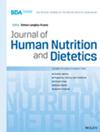Prevalence and factors associated with the Minimum Dietary Diversity among HIV-positive women receiving Antiretroviral Therapy in Kabale district, Uganda
Abstract
Background
Malnutrition and HIV form a vicious cycle and women are at an increased risk of malnutrition from HIV. The Food and Agriculture Organization (FAO) recommends a minimum dietary diversity for women (MDD-W) of five food groups; however, paucity of information exists about the diet quality of this population in Uganda. The present study aimed to determine the prevalence and factors associated with the MDD among HIV positive women of reproductive age (15–49 years) receiving antiretroviral therapy in Kabale district, Uganda.
Methods
This was a cross-sectional study. Probability proportional to size sampling was applied to select the number of participants per clinic and respondents were sampled systematically on a particular day in each clinic. A structured questionnaire was used to collect data on the respondent characteristics and the FAO's Individual Dietary Diversity questionnaire was used to collect the 24-hour dietary intake. Data were analysed using appropriate software. Descriptive statistics were applied for univariate analysis. Modified Poisson was used to determine the factors associated with MDD. The study was approved by the Makerere University School of Public Health Institutional Review Board and informed consent was obtained from the respondents.
Results
Some 90.9% of the respondents were Bakiga, mean age was 34.8 ± 8.1 years, 47.6% were married and 98.0% came from nuclear families with 4.4 ± 1.9 members. The mean number of food groups consumed was 4.7 ± 1.7 with roots and tubers, pulses, and dark leafy and vitamin A vegetables, whereas milk and eggs were mostly consumed and fruits were least consumed. The prevalence of the MDD-W was 48.2%. Factors associated with MDD score at multivariate level included; age, type of employment, having nausea, viral load status and HIV clinical stage.
Conclusions
Almost one half of the HIV positive women on antiretroviral therapy in the district achieve the MDD-W, attributed to being middle aged, being casual employment and having an unsuppressed viral load.



 求助内容:
求助内容: 应助结果提醒方式:
应助结果提醒方式:


